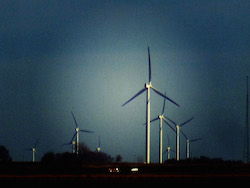A new report, “Some Hits, Some Misses…All-in-All…To Be Taken with a Grain of Salt,” looks at the accuracy of the forecasts for renewable electricity made by the U.S. Energy Information Administration (EIA) in its monthly “Short-Term Energy Outlook” (STEO) reports. Published by the SUN DAY Campaign, the report finds 2015 forecasts have generally followed the actual pattern of ups-and-downs in electricity generation rates from renewable energy sources. However, finds the report, with a few exceptions, EIA underestimated the actual overall growth.
Ken Bossong, executive director of the SUN DAY Campaign notes that EIA’s monthly predictions of new capacity from renewable sources including biomass, geothermal, hydropower, solar and wind, have been lower than what went into production. He says EIA has failed to capture the magnitude of the swift growth rates in utility-scale solar. Forecasts, he predicts, will likely be exceeded by actual growth. For example, EIA’s 2016 predictions of 0.6 percent – 0.7 percent for utility-scale solar’s share of total U.S. electrical generation will very possibly be met a year earlier. Predictions of 10 – 12 GW of new utility-scale solar capacity installed between 2014 and 2016 are also likely to be exceeded.
Bossong finds that 2015 reports began with more optimism about the prospects of hydropower and wind, than what has actually gone into production. However, generation by wind and hydropower new appear to be bouncing back, he says. Despite a slow start to the year, Bossong ultimately, EIA forecasts will be underestimated as wind generation is headed for levels above those recorded in 2014 while hydro’s shortfall for 2015 will more than likely be less than EIA anticipated.
“While EIA’s short-term energy forecasts can provide a very useful pulse of changes in the nation’ energy mix, they tend to mirror the agency’s long-term forecasts which notoriously low-ball expectations for renewable energy growth,” explains Bossong. “In recent years, renewable energy, particularly wind and solar, have vastly outpaced and outperformed EIA’s predictions – even those made for very short-term time periods.”
In addition, Bossong’s analysis finds actual end-of-the-year figures for new capacity and electricity generated by both nonhydro renewables, and renewables including conventional hydropower, will likely exceed EIA’s predictions by at least modest levels. It is almost certain, adds Bossong, that the majority of new electrical generating capacity installed during 2015 will be from renewables and renewables will account for more than 17.5 percent of total installed U.S. operating generating capacity by year’s end.


